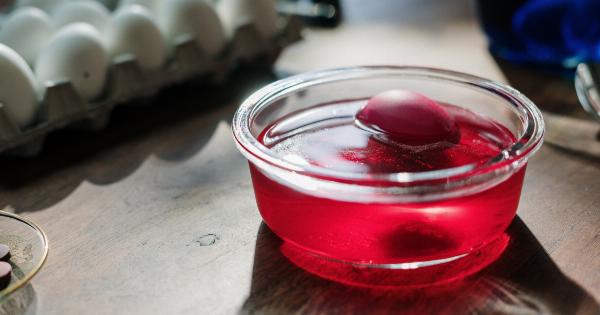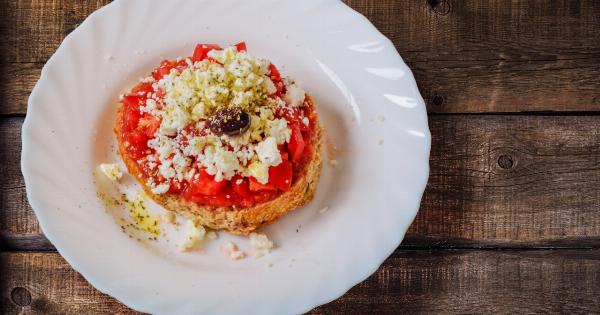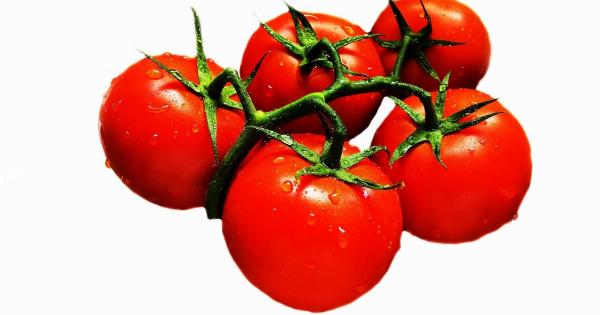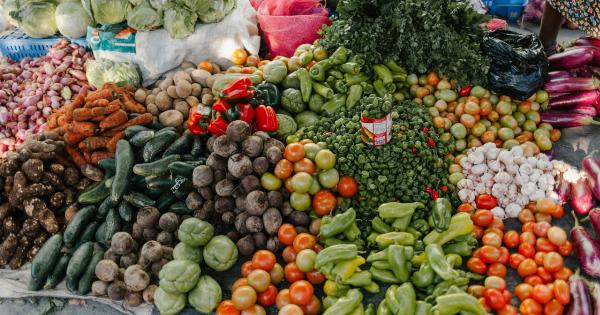Tomatoes are widely enjoyed for their vibrant color, juicy texture, and delicious taste. Whether added to salads, sandwiches, or incorporated into various recipes, tomatoes are a versatile and beloved ingredient.
However, their flavor is at its best when they are fresh and fully ripe. Over time, tomatoes can lose their freshness and taste. Understanding when tomatoes stop tasting fresh can help you make the most of this delectable fruit.
The importance of freshness
Tomatoes, like many other fruits, are subject to changes in taste and texture as they age. When tomatoes are fresh, they offer a perfect balance of sweetness and acidity, with an intense burst of flavor.
They are plump, firm, and juicy, making them a delightful addition to any dish.
As tomatoes ripen, they go through various stages. When fully ripe, they are at their peak flavor, offering the optimal combination of sweetness, acidity, and juiciness.
However, as time passes, the taste and texture of tomatoes can change significantly as they continue to ripen and eventually deteriorate.
Factors affecting tomato flavor
Several factors can contribute to the deterioration of tomato flavor. Understanding these factors can help you determine when tomatoes are no longer fresh and at their best:.
1. Time since harvest
Tomatoes continue to ripen after they are harvested. The longer it has been since a tomato was picked, the more likely it is to have lost its fresh taste.
This is because the natural sugars in the fruit start to convert to starch as time passes, leading to a decrease in sweetness. Additionally, the acidity may decrease, resulting in a less vibrant flavor.
2. Storage conditions
Proper storage is essential for maintaining the freshness of tomatoes. Exposure to high temperatures can accelerate the ripening process, causing the tomatoes to lose their fresh taste more quickly.
Conversely, refrigeration can slow down the ripening process and help preserve the flavor. However, refrigerating tomatoes can also negatively impact their texture, often leading to a mealy or mushy consistency.
3. Variety of tomato
The variety of tomato also plays a significant role in determining how long they will stay fresh and flavorful. Some varieties are specifically bred to have a longer shelf life and resist early deterioration.
These varieties, often labeled as “long shelf life” or “storage tomatoes,” can remain fresh for a longer duration compared to more delicate and heirloom varieties.
4. Exposure to sunlight
Direct exposure to sunlight can cause tomatoes to ripen faster, which may result in a decrease in freshness and taste. It is important to store tomatoes away from direct sunlight to avoid premature aging.
Signs that tomatoes are no longer fresh
While there is no exact timeframe for when tomatoes stop tasting fresh, certain signs indicate that their flavor and texture have deteriorated:.
1. Wrinkled or shriveled skin
When tomatoes are past their prime, their skin tends to develop wrinkles and shrivels. The texture is no longer smooth and taut, indicating a loss of freshness.
2. Soft or mushy texture
Fresh tomatoes should be firm to the touch, with a slight give when pressed gently. If the tomato feels overly soft or mushy, it is a sign that it is no longer fresh and may lack flavor.
3. Dull color
Fresh tomatoes have a vibrant, glossy appearance, with rich colors ranging from deep red to orange or yellow, depending on the variety. When tomatoes lose their freshness, the color can become dull and lackluster.
4. Lack of aroma
When you cut open a fresh tomato, it releases a delightful aroma that is distinctively tomato-like. However, as tomatoes age and lose their freshness, this aroma diminishes.
How to ensure tomato freshness
To enjoy the freshest and most flavorful tomatoes, consider the following tips:.
1. Grow your own
One sure way to ensure tomato freshness is by growing your own. If you have a garden or access to a sunny patio, growing tomatoes allows you to pick them at their peak ripeness, ensuring maximum flavor and freshness.
2. Buy local and in-season
When purchasing tomatoes from the store or farmer’s market, opt for locally grown and in-season varieties. Locally grown tomatoes are likely to have spent less time in transit, increasing their freshness.
In-season tomatoes are also more likely to be at their flavor peak.
3. Store properly
For short-term storage, keep tomatoes at room temperature, away from direct sunlight. However, if you have an excess of ripe tomatoes, refrigeration can help slow down their ripening process and extend their freshness.
Just be aware of the impact this may have on their texture.
4. Use them at their best
To fully enjoy the taste of tomatoes, it’s best to use them when they are fresh and ripe. Incorporate them into your recipes as soon as possible after buying or harvesting them for the most intense flavor experience.
Conclusion
Tomatoes are a delightful and versatile ingredient, providing a burst of flavor to various dishes. To fully savor their taste, it’s important to recognize when tomatoes stop tasting fresh.
Factors such as time since harvest, storage conditions, variety, and exposure to sunlight can all affect tomato flavor. By being aware of these factors and paying attention to signs of deterioration, you can maximize the enjoyment of fresh tomatoes in your culinary creations.






























